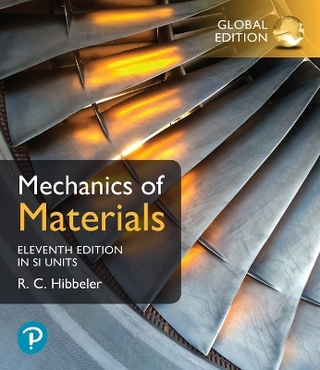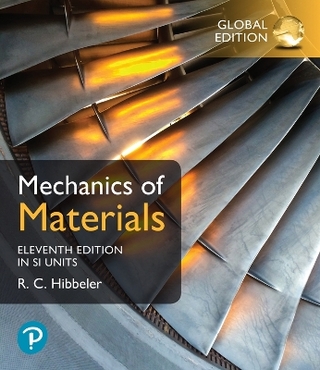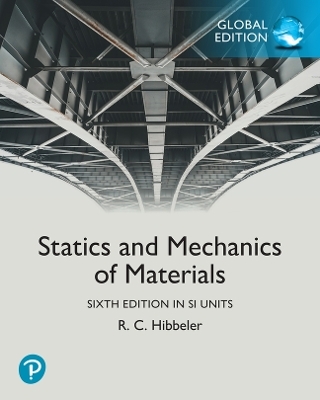
Fundamentals of Heat Exchanger Design ion
John Wiley & Sons Inc (Hersteller)
978-0-470-17260-5 (ISBN)
- Keine Verlagsinformationen verfügbar
- Artikel merken
This comprehensive and unique source integrates the material usually distributed among a half a dozen sources. It presents a unified approach to modeling of new designs and develops the skills for complex engineering analysis. It provides industrial insight to the applications of the basic theory developed.
RAMESH K. SHAH, PhD, is a research professor at the Rochester Institute of Technology and former senior staff research scientist at Delphi Harrison Thermal Systems and General Motors Corporation in Lockport, New York. He has authored numerous books, proceedings, journal articles, and conference papers covering heat exchangers and related topics. DUSAN P. SEKULIC, Dr Sc Eng, is an adjunct professor in the Mechanical Engineering Department and a senior research manager at the Center for Robotics and Manufacturing Systems in the College of Engineering at the University of Kentucky. He has authored numerous research and educational archival journal articles, book chapters, and conference papers covering heat exchangers and related topics.
Preface.Nomenclature.1 Classification of Heat Exchangers.1.1 Introduction.1.2 Classification According to Transfer Processes.1.3 Classification According to Number of Fluids.1.4 Classification According to Surface Compactness.1.5 Classification According to Construction Features.1.6 Classification According to Flow Arrangements.1.7 Classification According to Heat Transfer Mechanisms.Summary.References.Review Questions.2 Overview of Heat Exchanger Design Methodology.2.1 Heat Exchanger Design Methodology.2.2 Interactions Among Design Considerations.Summary.References.Review Questions.Problems.3 Basic Thermal Design Theory for Recuperators.3.1 Formal Analogy between Thermal and Electrical Entities.3.2 Heat Exchanger Variables and Thermal Circuit.3.3 The ?(Epsilon)-NTU Method.3.4 Effectiveness - Number of Transfer Unit Relationships.3.5 The P-NTU Method.3.6 P-N TU R elat ionships.3.7 The Mean Temperature Difference Method.3.8 F Factors for Various Flow Arrangements.3.9 Comparison of the ?(Epsilon)-NTU, P-NTU, and MTD Methods.3.10 The ?(Psi)-P and P1-P2 Methods.3.11 Solution Methods for Determining Exchanger Effectiveness.3.12 Heat Exchanger Design Problems.Summary.References.Review Questions.Problems.4 Additional Considerations for Thermal Design of Recuperators.4.1 Longitudinal Wall Heat Conduction Effects.4.2 Nonuniform Overall Heat Transfer Coefficients.4.3 Additional Considerations for Extended Surface Exchangers.4.4 Additional Considerations for Shell-and-Tube Exchangers.Summary.References.Review Questions.Problems.5 Thermal Design Theory for Regenerators.5.1 Heat Transfer Analysis.5.2 The ?(Epsilon)-NTUo Method.5.3 The ?(Lambda)-?(Pi) Method.5.4 Influence of Longitudinal Wall Heat Conduction.5.5 Influence of Transverse Wall Heat Conduction.5.6 Influence of Pressure and Carryover Leakages.5.7 Influence of Matrix Material, Size, and Arrangement.Summary.References.Review Questions.Problems.6 Heat Exchanger Pressure Drop Analysis.6.1 Introduction.6.2 Extended Surface Heat Exchanger Pressure Drop.6.3 Regenerator Pressure Drop.6.4 Tubular Heat Exchanger Pressure Drop.6.5 Plate Heat Exchanger Pressure Drop.6.6 Pressure Drop Associated with Fluid Distribution Elements.6.7 Pressure Drop Presentation.6.8 Pressure Drop Dependence on Geometry and Fluid Properties.Summary.References.Review Questions.Problems.7 Surface Basic Heat Transfer and Flow Friction Characteristics.7.1 Basic Concepts.7.2 Dimensionless Groups.7.3 Experimental Techniques for Determining Surface Characteristics.7.4 Analytical and Semiempirical Heat Transfer and Friction Factor Correlations for Simple Geometries.7.5 Experimental Heat Transfer and Friction Factor Correlations for Complex Geometries.7.6 Influence of Temperature-Dependent Fluid Properties.7.7 Influence of Superimposed Free Convection.7.8 Influence of Superimposed Radiation.Summary.References.Review Questions.Problems.8 Heat Exchanger Surface Geometrical Characteristics.8.1 Tubular Heat Exchangers.8.2 Tube-Fin Heat Exchangers.8.3 Plate-Fin Heat Exchangers.8.4 Regenerators with Continuous Cylindrical Passages.8.5 Shell-and-Tube Exchangers with Segmental Baffles.8.6 Gasketed Plate Heat Exchangers.Summary.References.Review Questions.9 Heat Exchanger Design Procedures.9.1 Fluid Mean Temperatures.9.2 Plate-Fin Heat Exchangers.9.3 Tube-Fin Heat Exchangers.9.3.4 Core Mass Velocity Equation.9.4 Plate Heat Exchangers.9.5 Shell-and-Tube Heat Exchangers.9.6 Heat Exchanger Optimization.Summary.References.Review Questions.Problems.10 Selection of Heat Exchangers and Their Components.10.1 Selection Criteria Based on Operating Parameters.10.2 General Selection Guidelines for Major Exchanger Types.10.3 Some Quantitative Considerations.Summary.References.Review Questions.Problems.11 Thermodynamic Modeling and Analysis.11.1 Introduction.11.2 Modeling a Heat Exchanger Based on the First Law of Thermodynamics.11.3 Irreversibilities in Heat Exchangers.11.4 Thermodynamic Irreversibility and Temperature Cross Phenomena.11.5 A Heuristic Approach to an Assessment of Heat Exchanger Effectiveness.11.6 Energy, Exergy, and Cost Balances in the Analysis and Optimization of Heat Exchangers.11.7 Performance Evaluation Criteria Based on the Second Law of Thermodynamics.Summary.References.Review Questions.Problems.12 Flow Maldistribution and Header Design.12.1 Geometry-Induced Flow Maldistribution.12.2 Operating Condition-Induced Flow Maldistribution.12.3 Mitigation of Flow Maldistribution.12.4 Header and Manifold Design.Summary.References.Review Questions.Problems.13 Fouling and Corrosion.13.1 Fouling and its Effect on Exchanger Heat Transfer and Pressure Drop.13.2 Phenomenological Considerations of Fouling.13.3 Fouling Resistance Design Approach.13.4 Prevention and Mitigation of Fouling.13.5 Corrosion in Heat Exchangers.Summary.References.Review Questions.Problems.Appendix A: Thermophysical Properties.Appendix B: ?(Epsilon)-NTU Relationships for Liquid-Coupled Exchangers.Appendix C: Two-Phase Heat Transfer and Pressure Drop Correlations.C.1 Two-Phase Pressure Drop Correlations.C.2 Heat Transfer Correlations for Condensation.C.3 Heat Transfer Correlations for Boiling.Appendix D: U and CUA Values for Various Heat Exchangers.General References on or Related to Heat Exchangers.Index.
| Erscheint lt. Verlag | 7.11.2007 |
|---|---|
| Verlagsort | New York |
| Sprache | englisch |
| Themenwelt | Technik ► Maschinenbau |
| ISBN-10 | 0-470-17260-6 / 0470172606 |
| ISBN-13 | 978-0-470-17260-5 / 9780470172605 |
| Zustand | Neuware |
| Informationen gemäß Produktsicherheitsverordnung (GPSR) | |
| Haben Sie eine Frage zum Produkt? |
aus dem Bereich


